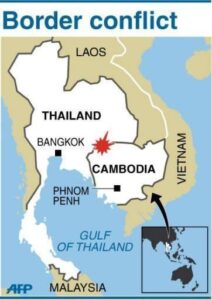Prime Minister Shri Narendra Modi Dedicates Frontline Naval Combatants INS Surat, INS Nilgiri, and INS Vaghsheer to the Nation
Prime Minister Shri Narendra Modi today commissioned three frontline naval combatants—INS Surat, INS Nilgiri, and INS Vaghsheer—at the Naval Dockyard in Mumbai, marking a historic milestone for India’s maritime heritage and defense sector. Addressing the gathering, Shri Modi highlighted the significance of this occasion, coinciding with Army Day, and saluted the brave warriors who protect the nation’s safety and security.
Key Highlights from the Prime Minister’s Speech:
-
Strengthening the Indian Navy
Shri Modi emphasized that this is the first time a destroyer (INS Surat), a frigate (INS Nilgiri), and a submarine (INS Vaghsheer) have been commissioned simultaneously. He underlined the pride in all three platforms being indigenously built, reflecting India’s commitment to Atmanirbhar Bharat. -
Maritime Heritage and Modern Aspirations
- The Prime Minister invoked the vision of Chhatrapati Shivaji Maharaj, who laid the foundation of India’s naval prowess.
- INS Nilgiri represents the Chola dynasty’s maritime strength, INS Surat pays homage to Gujarat’s historic port connections, and INS Vaghsheer symbolizes advanced submarine technology.
-
India’s Global Leadership
- India is emerging as a major maritime power and a reliable partner globally, especially in the Global South.
- Through initiatives like SAGAR (Security and Growth for All in the Region), India champions an open, secure, and inclusive Indo-Pacific Region.
-
Economic and Strategic Growth
- India’s defense production now exceeds ₹1.25 lakh crore, with exports reaching over 100 countries.
- The Make in India initiative has revolutionized shipbuilding, with 60 large ships currently under construction and over 90% of naval vessels now produced domestically.
- Major projects like the Vadhavan Port in Maharashtra and defense corridors in Uttar Pradesh and Tamil Nadu are bolstering India’s infrastructure and economy.
-
Future Focus Areas
- Projects like Samudrayaan aim to enhance India’s capabilities in deep-sea exploration.
- The Indian Navy has embraced reforms by adopting indigenous designs and modernizing its insignia to honor Chhatrapati Shivaji Maharaj’s legacy.
About the Naval Combatants
-
INS Surat
- The fourth ship of the P15B Guided Missile Destroyer Project.
- Features state-of-the-art weapon systems and 75% indigenous content.
-
INS Nilgiri
- The first ship of the P17A Stealth Frigate Project.
- Incorporates advanced stealth and survivability technologies.
-
INS Vaghsheer
- The sixth submarine of the P75 Scorpene Project, constructed in collaboration with France.
- Enhances India’s expertise in submarine technology and undersea warfare.
Significance of the Event
- The commissioning of these platforms demonstrates India’s capabilities in defense manufacturing and maritime security.
- It underscores India’s readiness to protect trade routes, combat regional threats, and safeguard economic interests.
- Shri Modi lauded the Indian Navy’s efforts to strengthen the Make in India campaign, driving economic growth and employment.
MCQs
-
What is unique about the commissioning of INS Surat, INS Nilgiri, and INS Vaghsheer?
a) They are the first naval combatants built with international collaboration.
b) It is the first time a destroyer, a frigate, and a submarine have been commissioned together.
c) They are equipped with nuclear weaponry.
d) They are the first vessels of their respective classes.
Answer: b) It is the first time a destroyer, a frigate, and a submarine have been commissioned together. -
What does SAGAR stand for in the context of India’s maritime strategy?
a) Strategic and Global Armed Response
b) Security and Growth for All in the Region
c) Safe and Agile Guarding of Resources
d) Sustainable and Global Access to Resources
Answer: b) Security and Growth for All in the Region






